Crafting a Paradox
In the months preceding Burning Man 2014 my brother Dustin and I set out to add to another member to our beautiful family of cars. The base vehicle was a 1991 Volvo 240 that I picked up for $500 a few years prior. She had a smashed front end and an odometer stalled out at 370,000 miles. The son of her previous owner had wrapped her around a tree somewhere along the way, but with the help of the brilliant Mel Kinder she had been revived and restored to a condition that was, if not pretty...presentable. Given my lifelong obsession with the Volvo 240 it was a wonderful proposition to transform one into a beautiful piece of functional art destined for the city of Black Rock. Below you will find a series of images of our talented crew transforming her and some notes about the process.
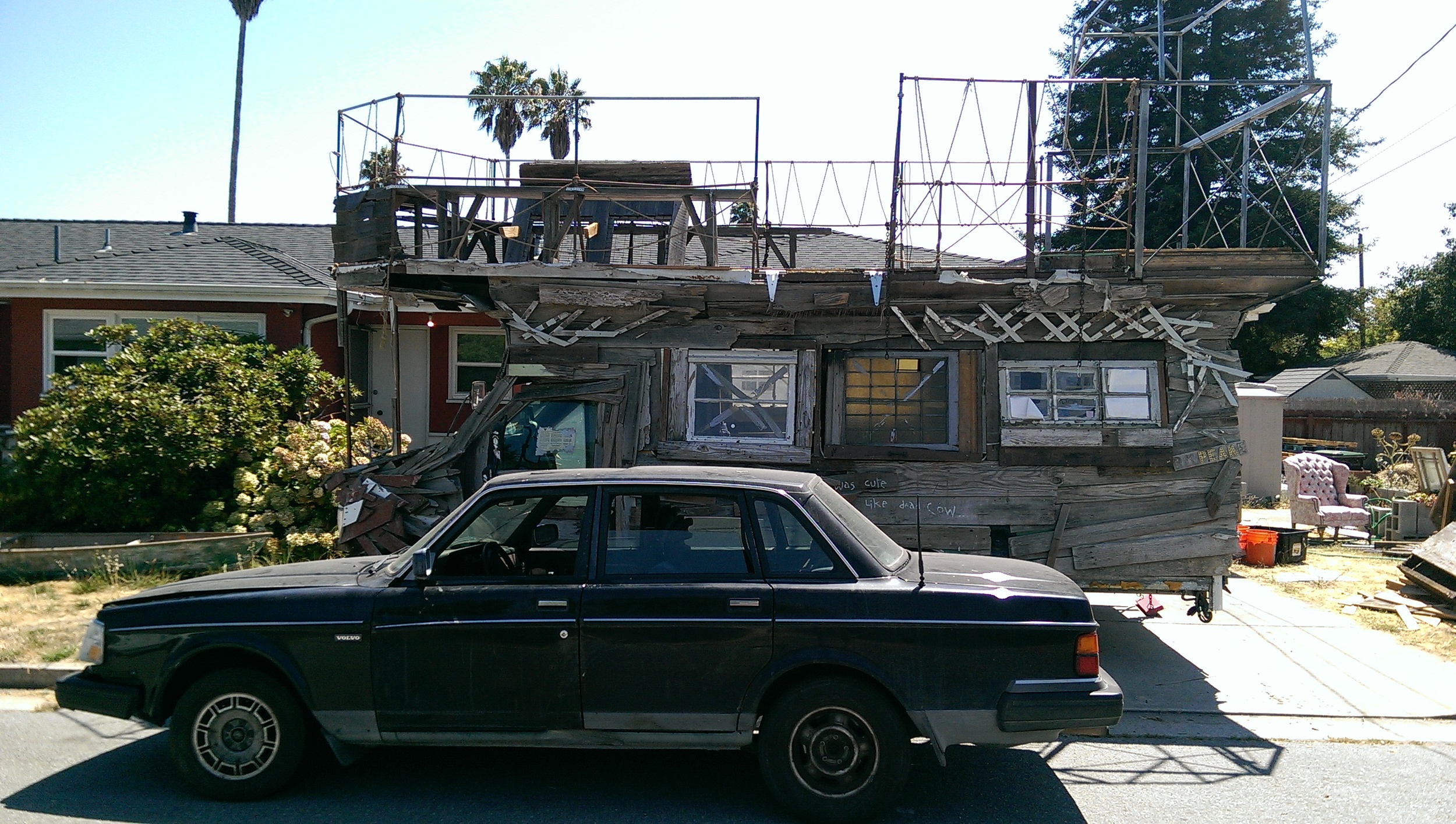
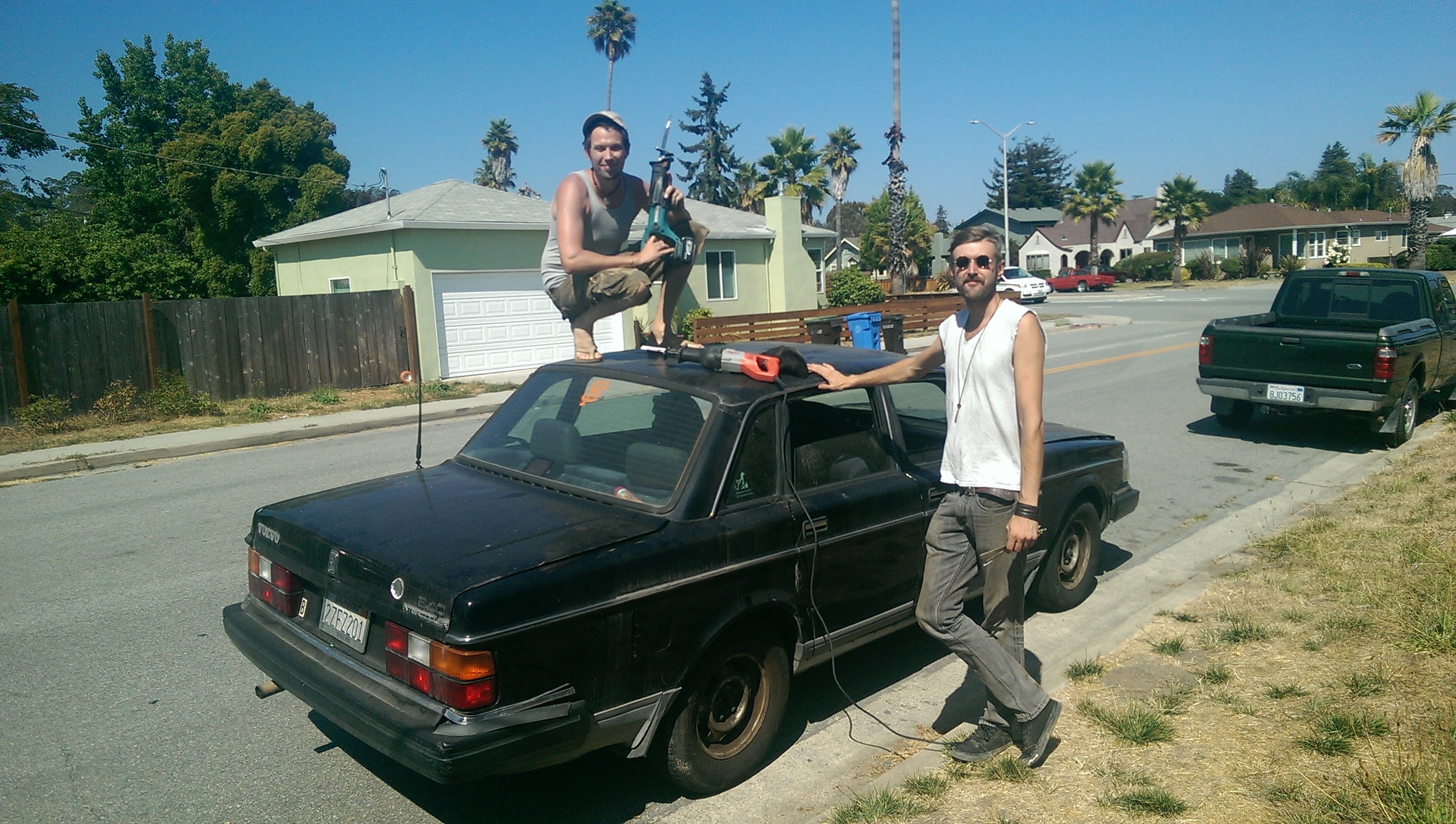
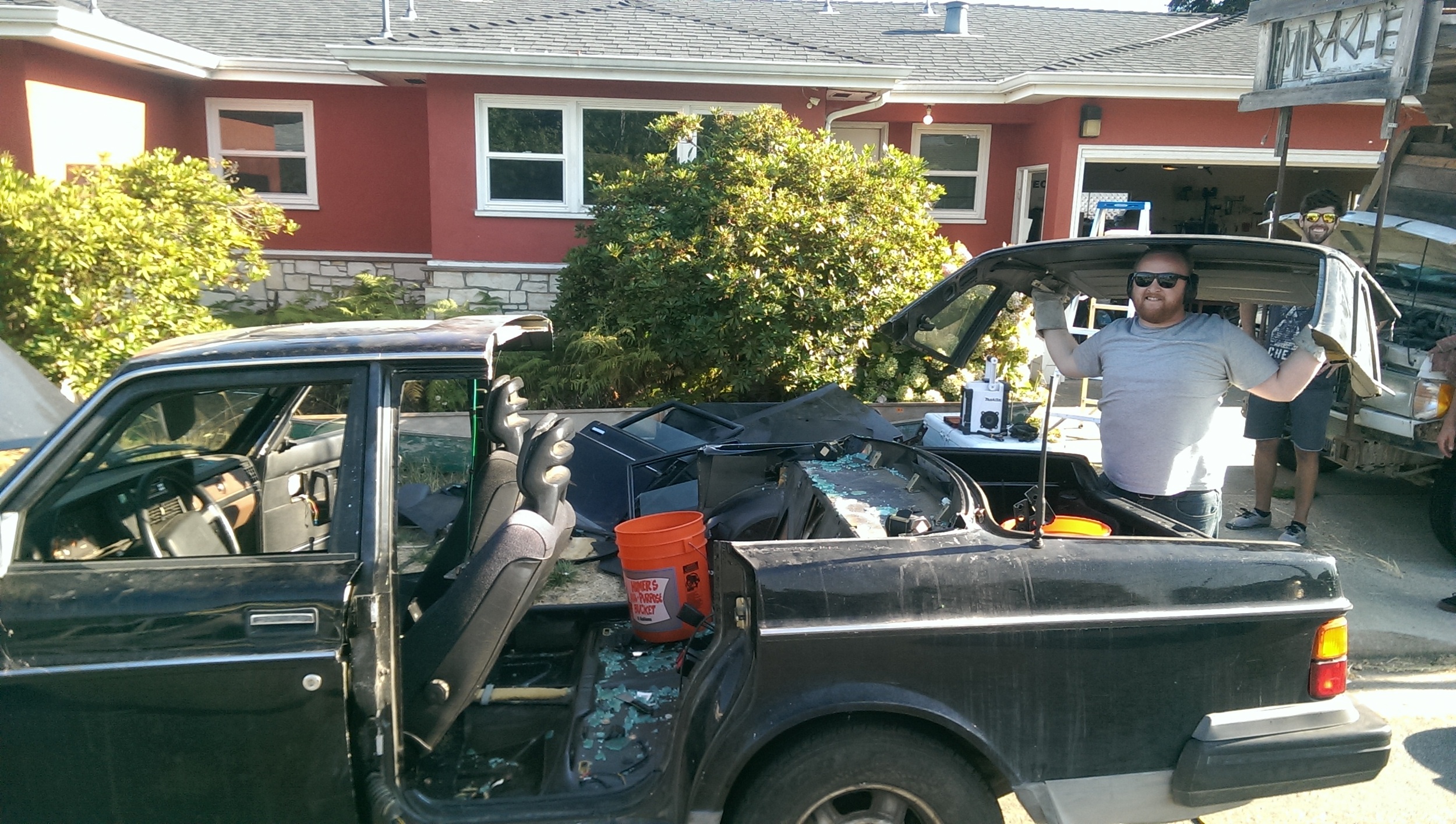
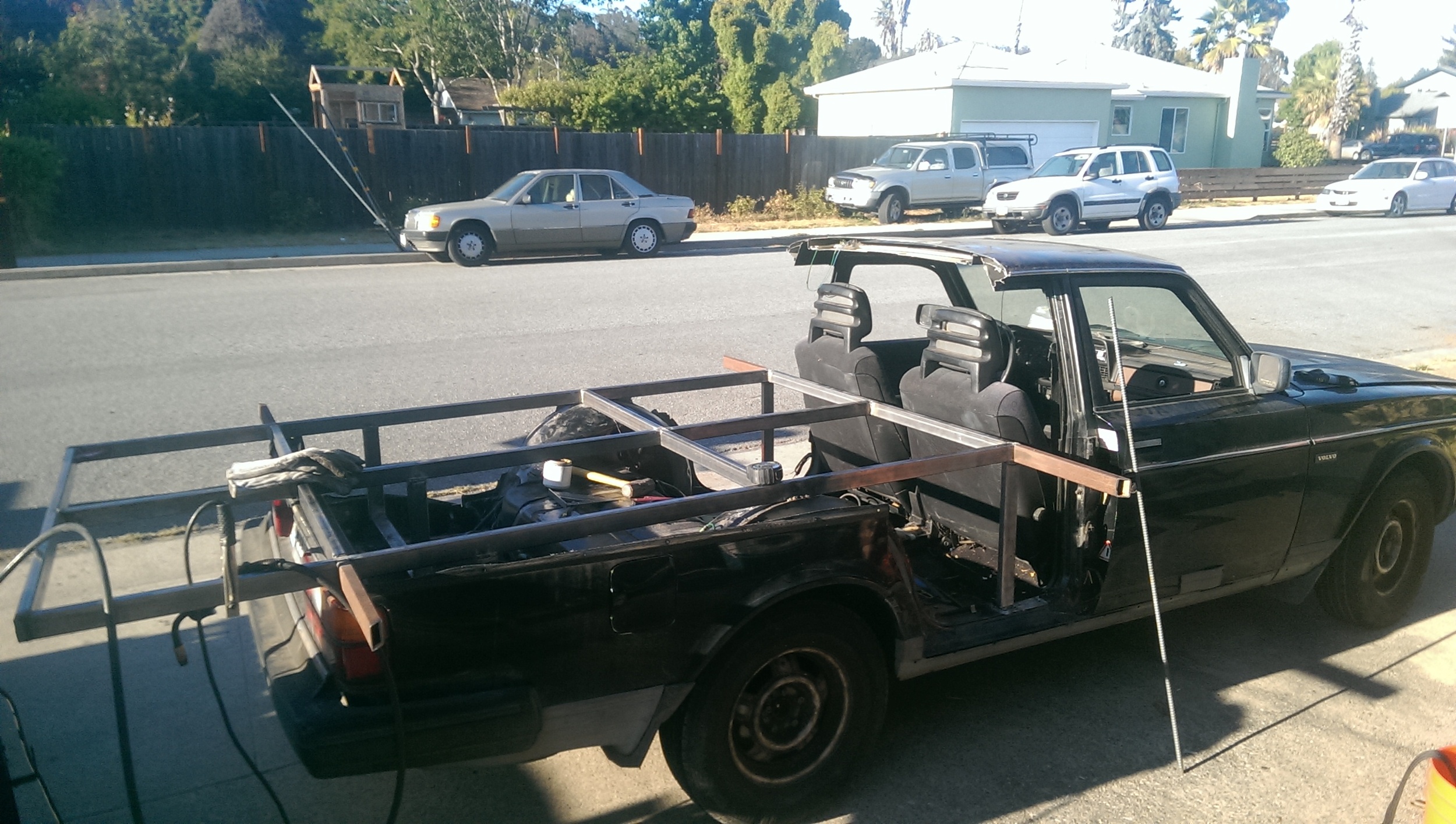
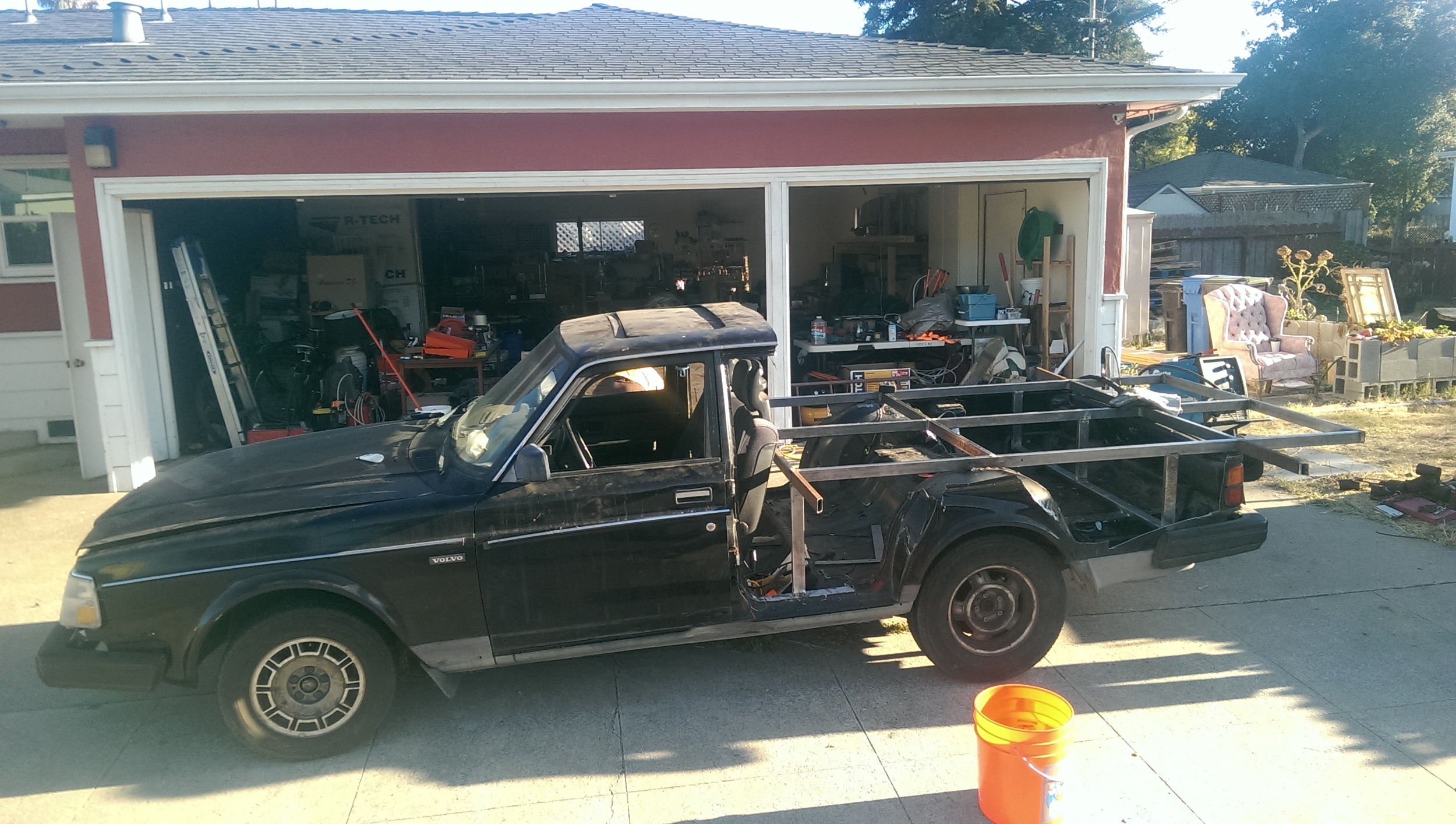
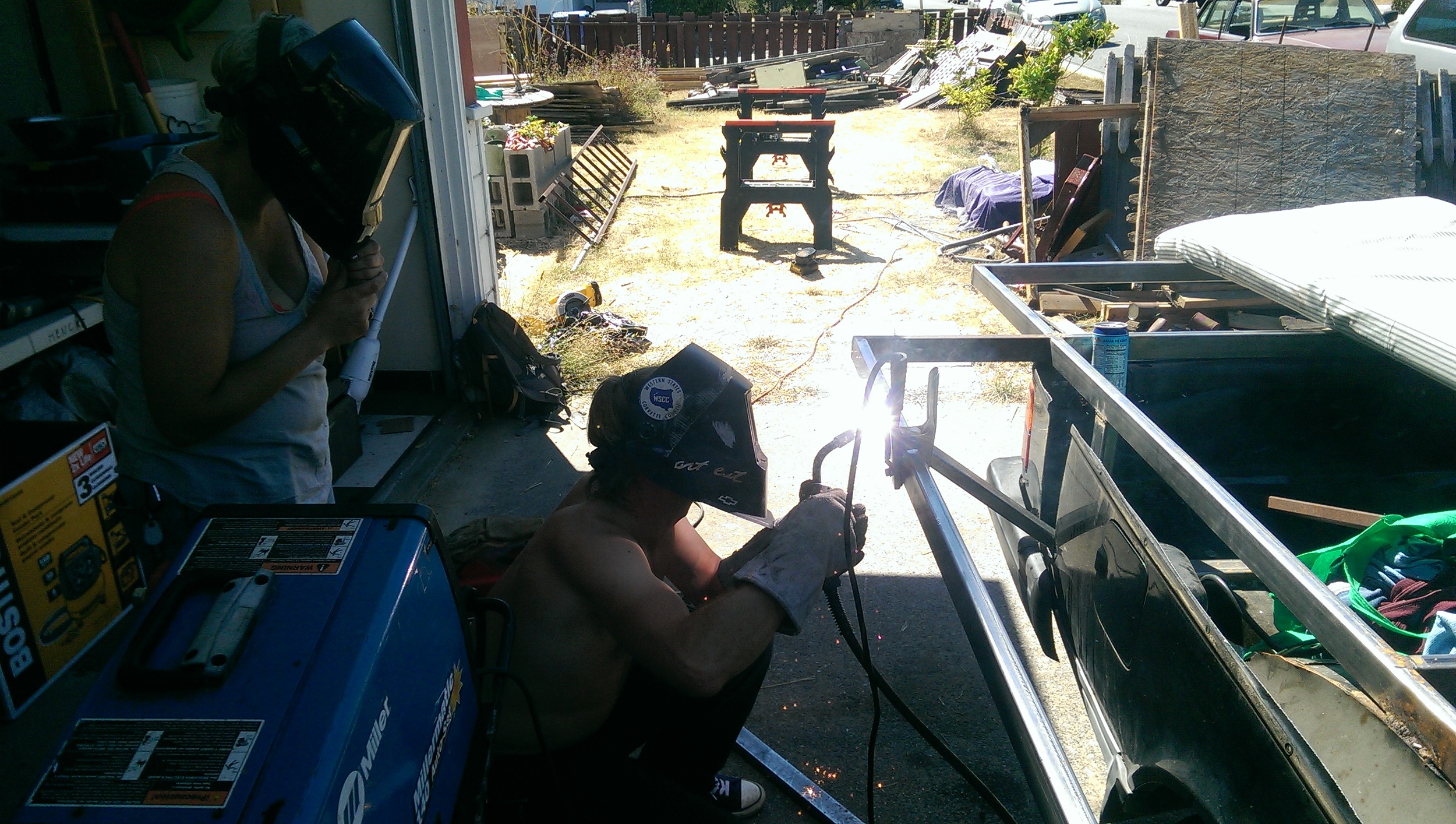
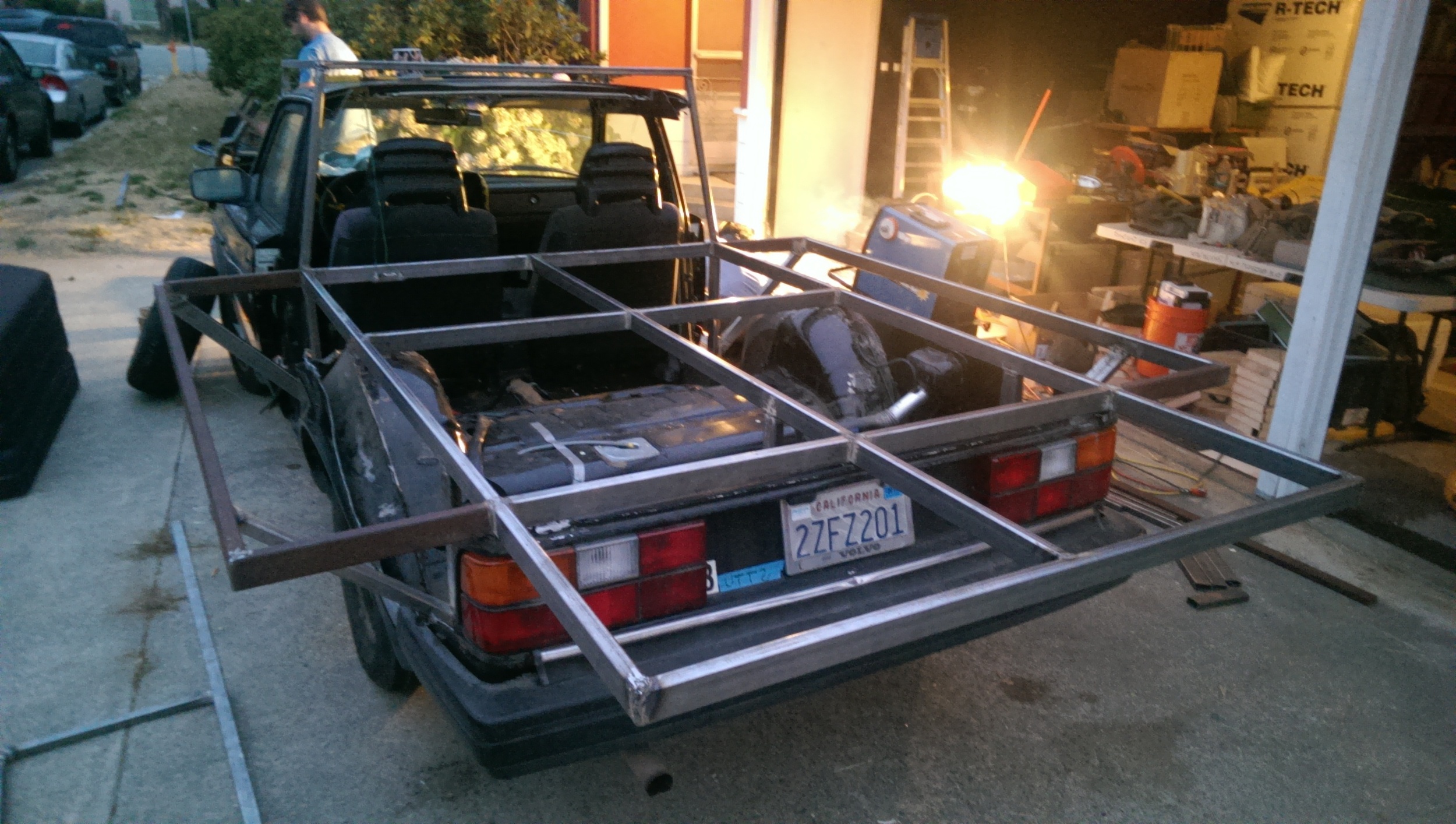
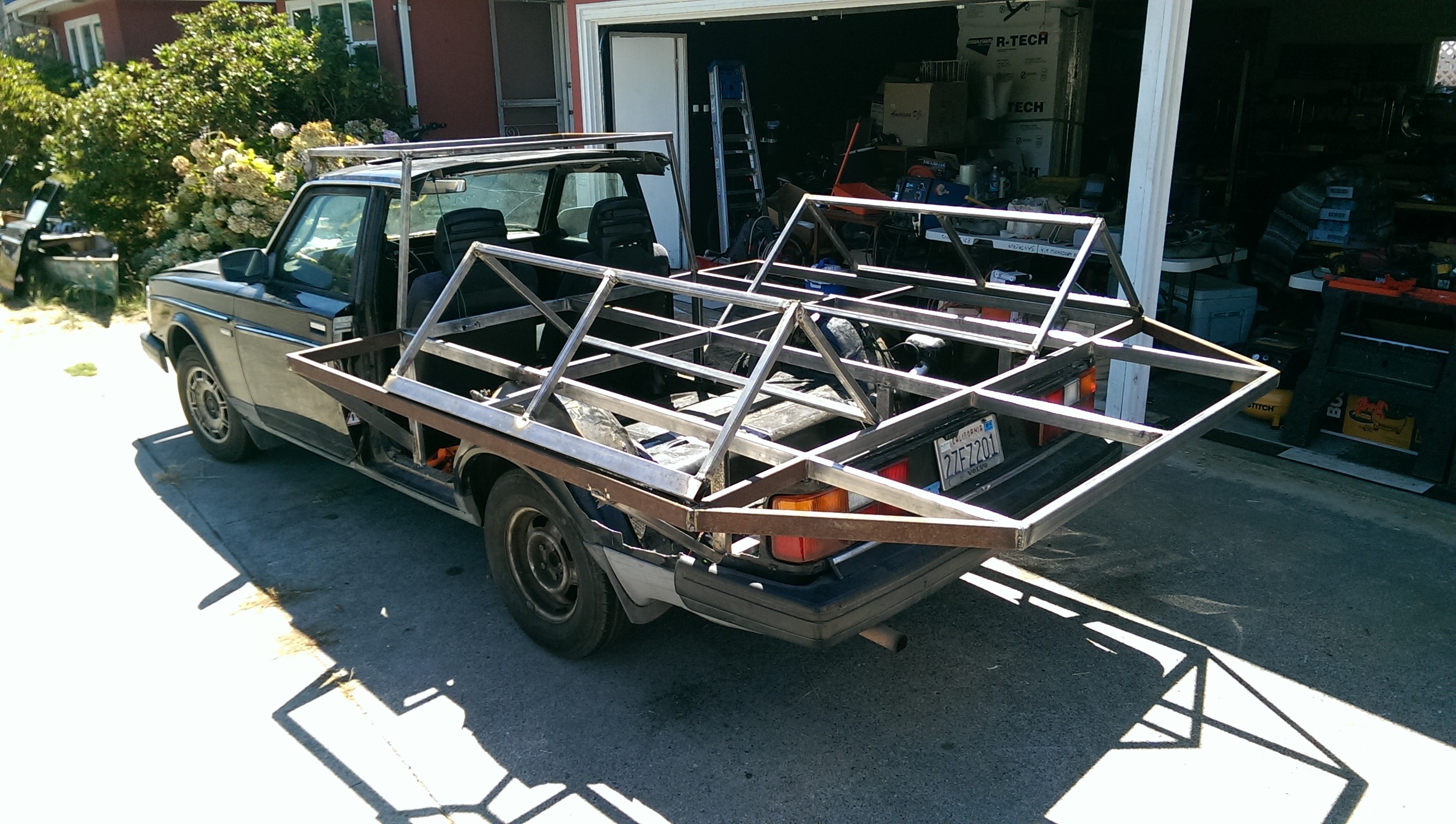
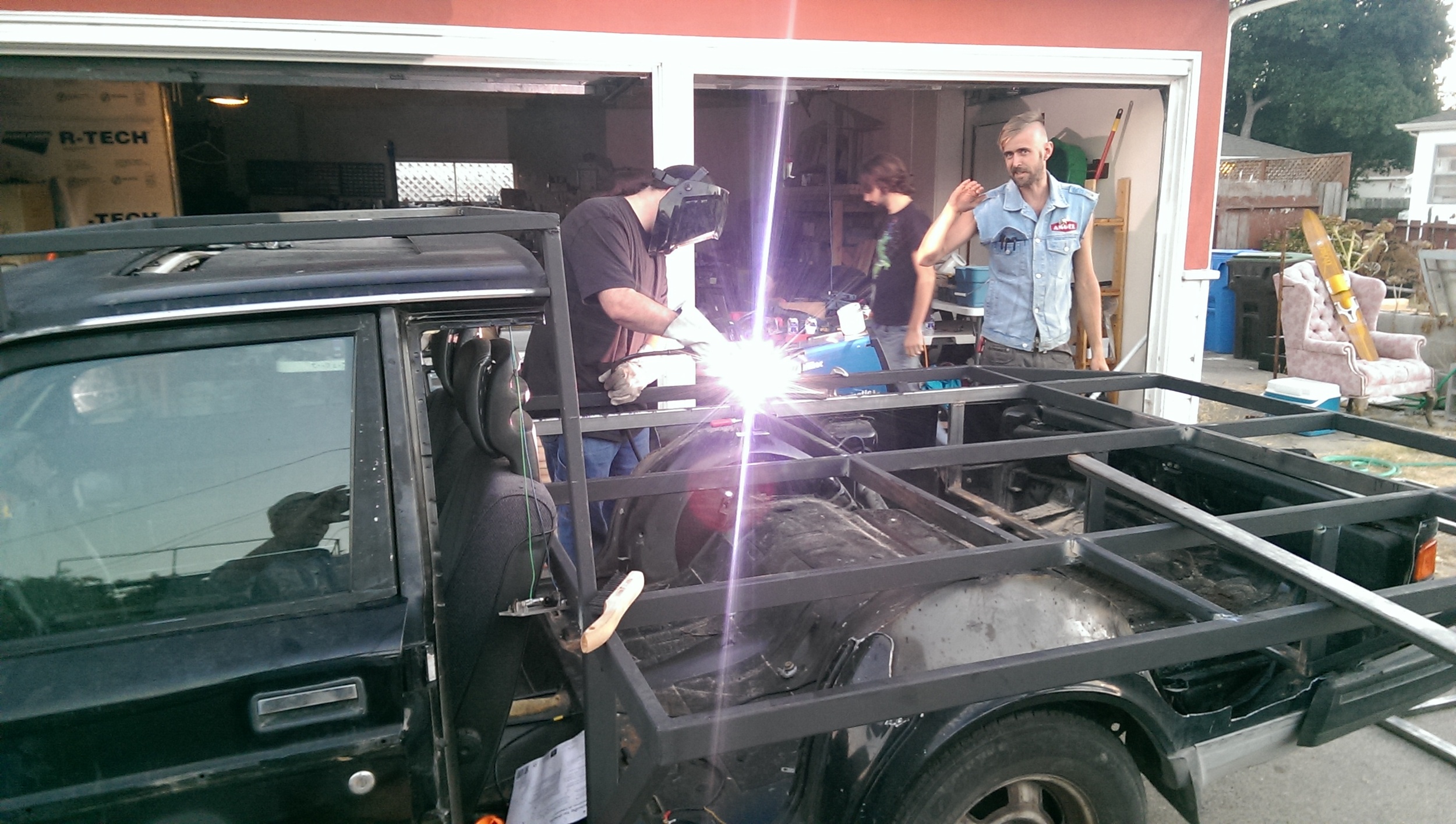


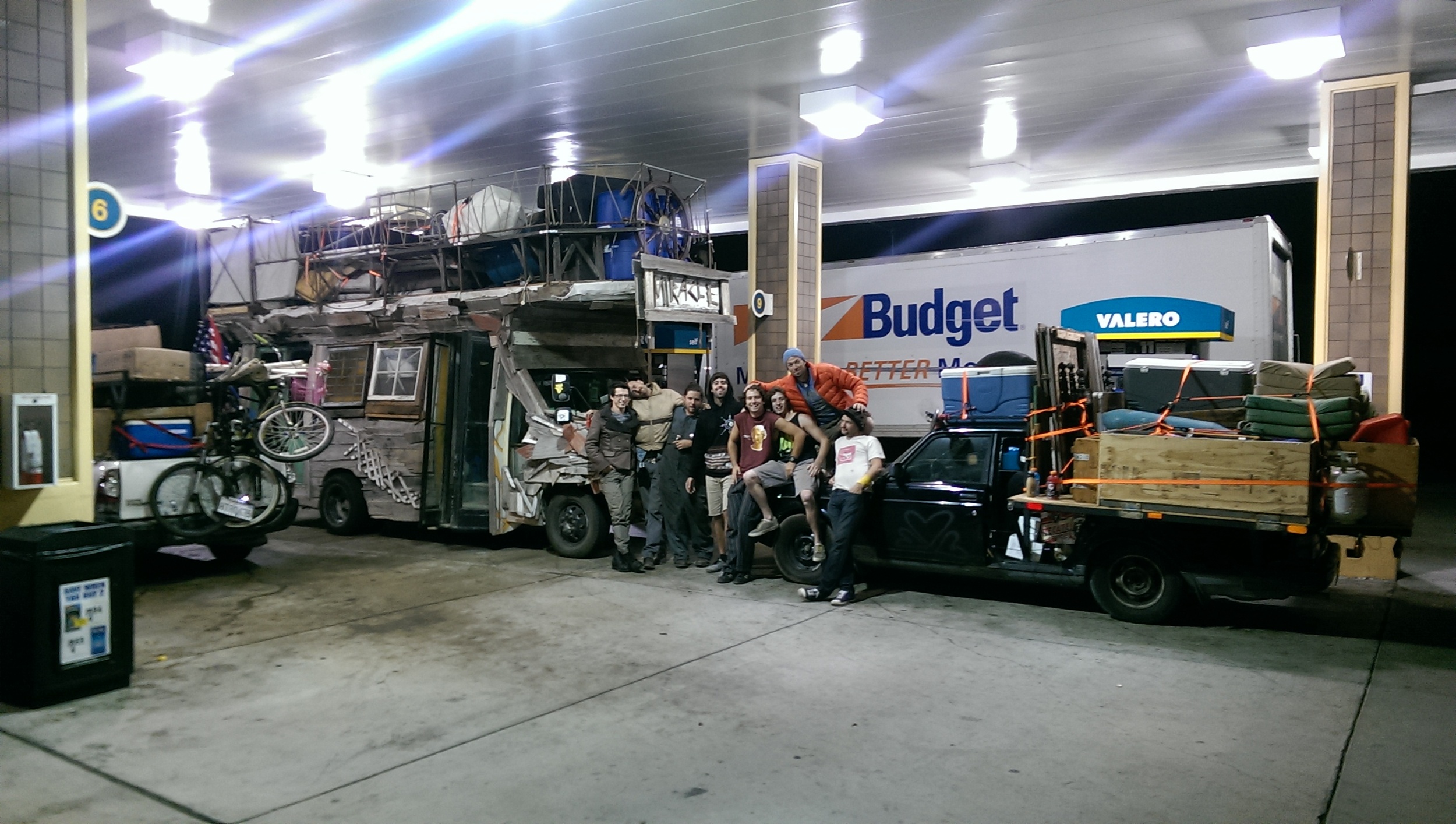
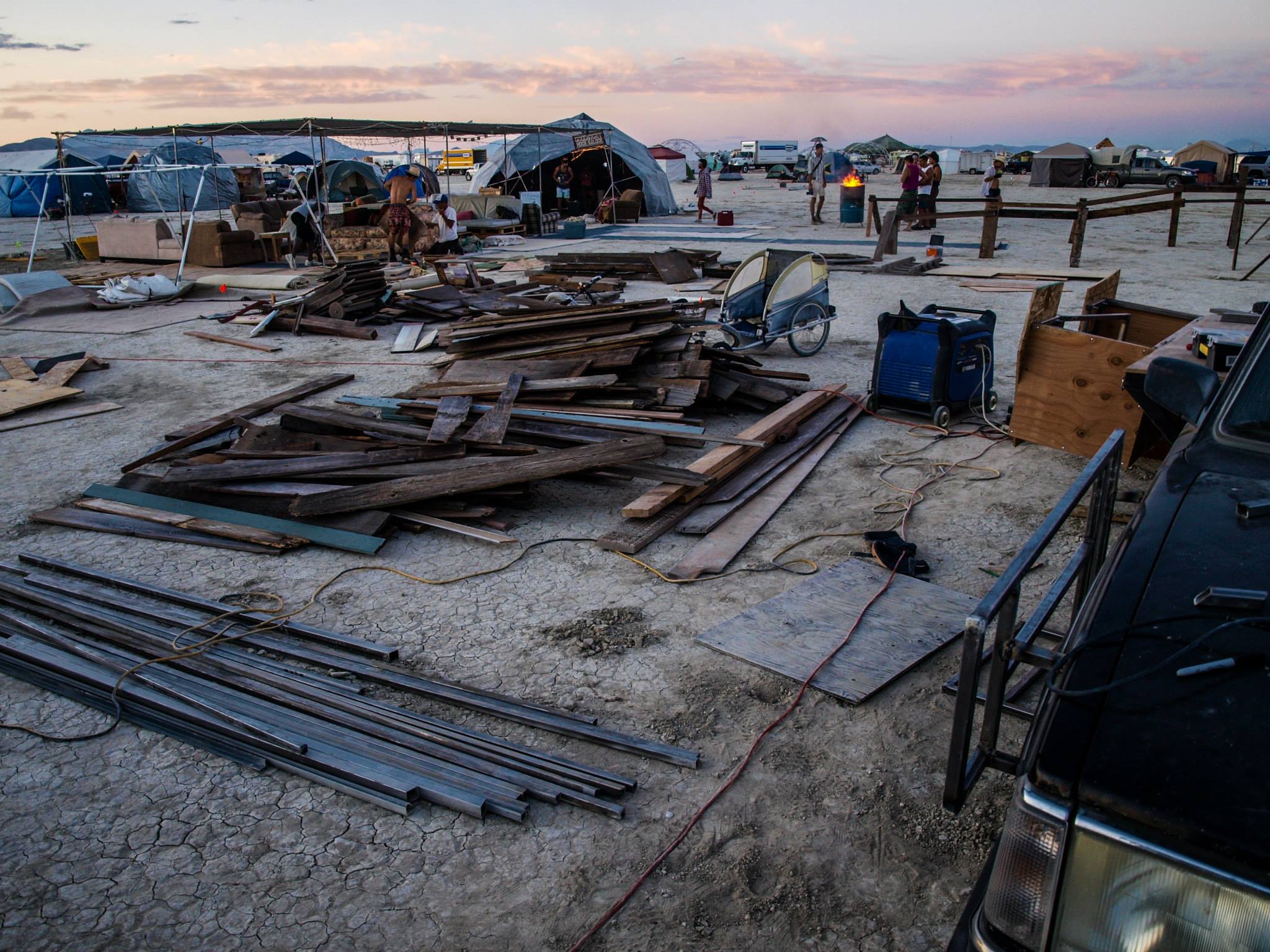

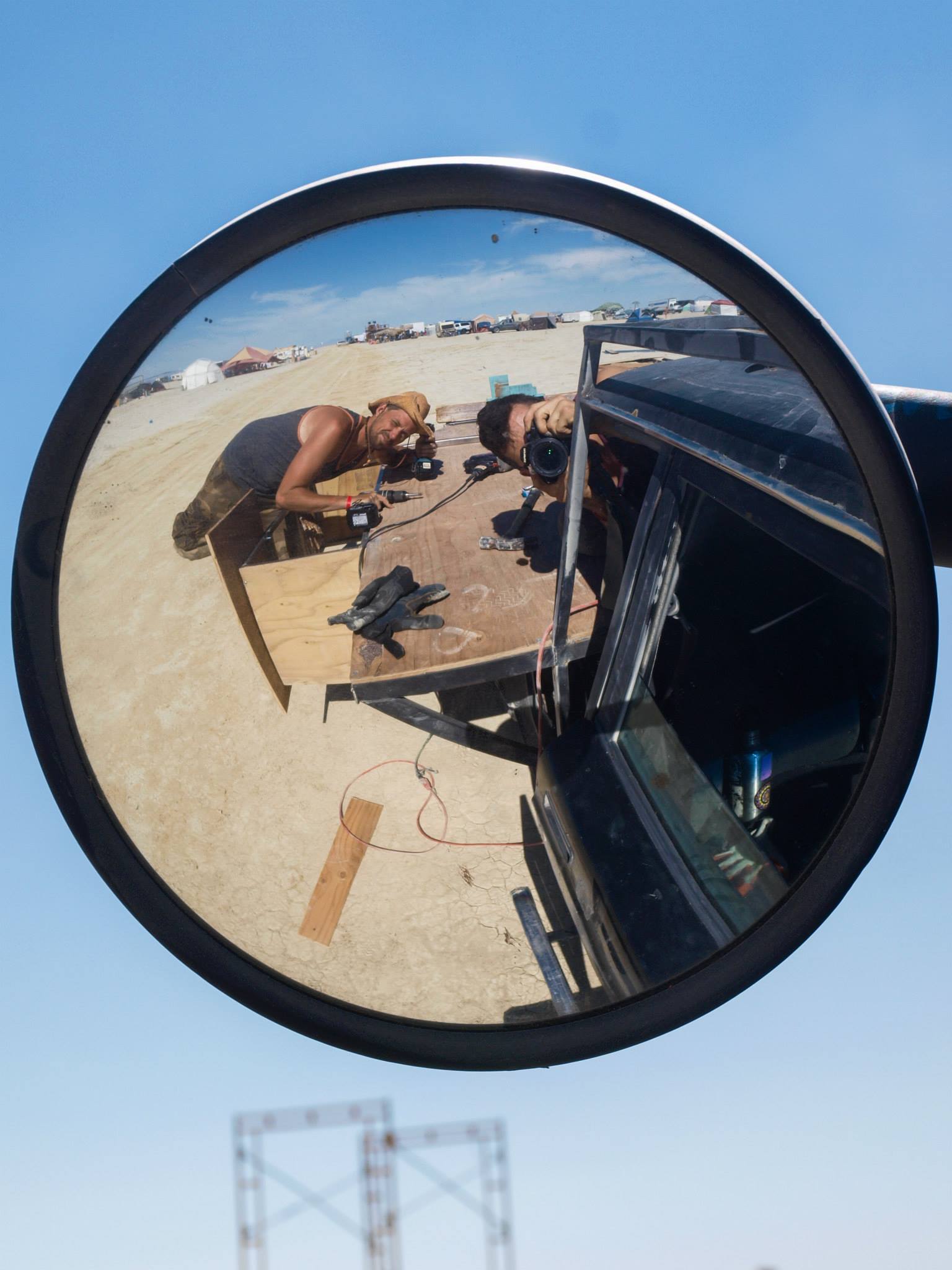
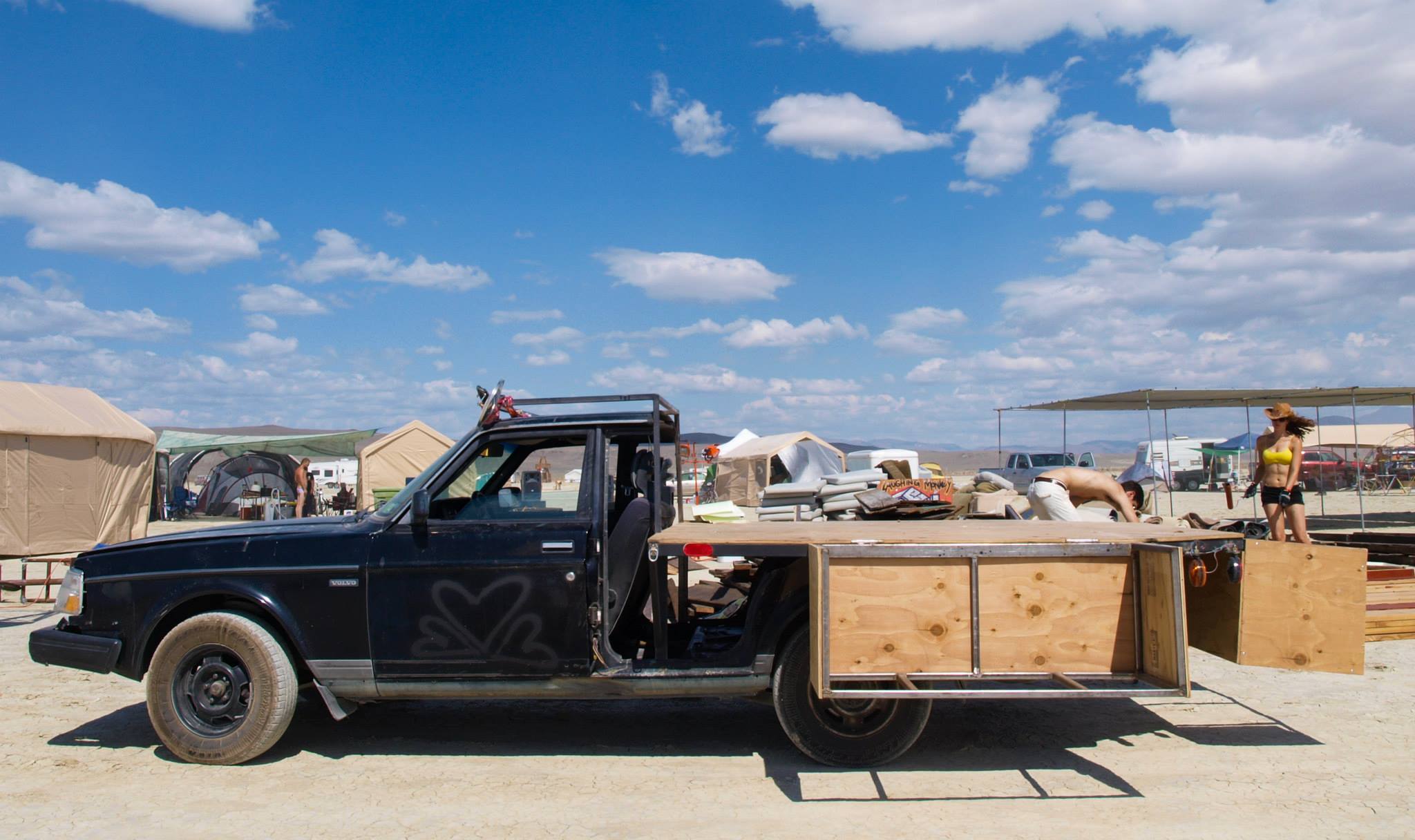
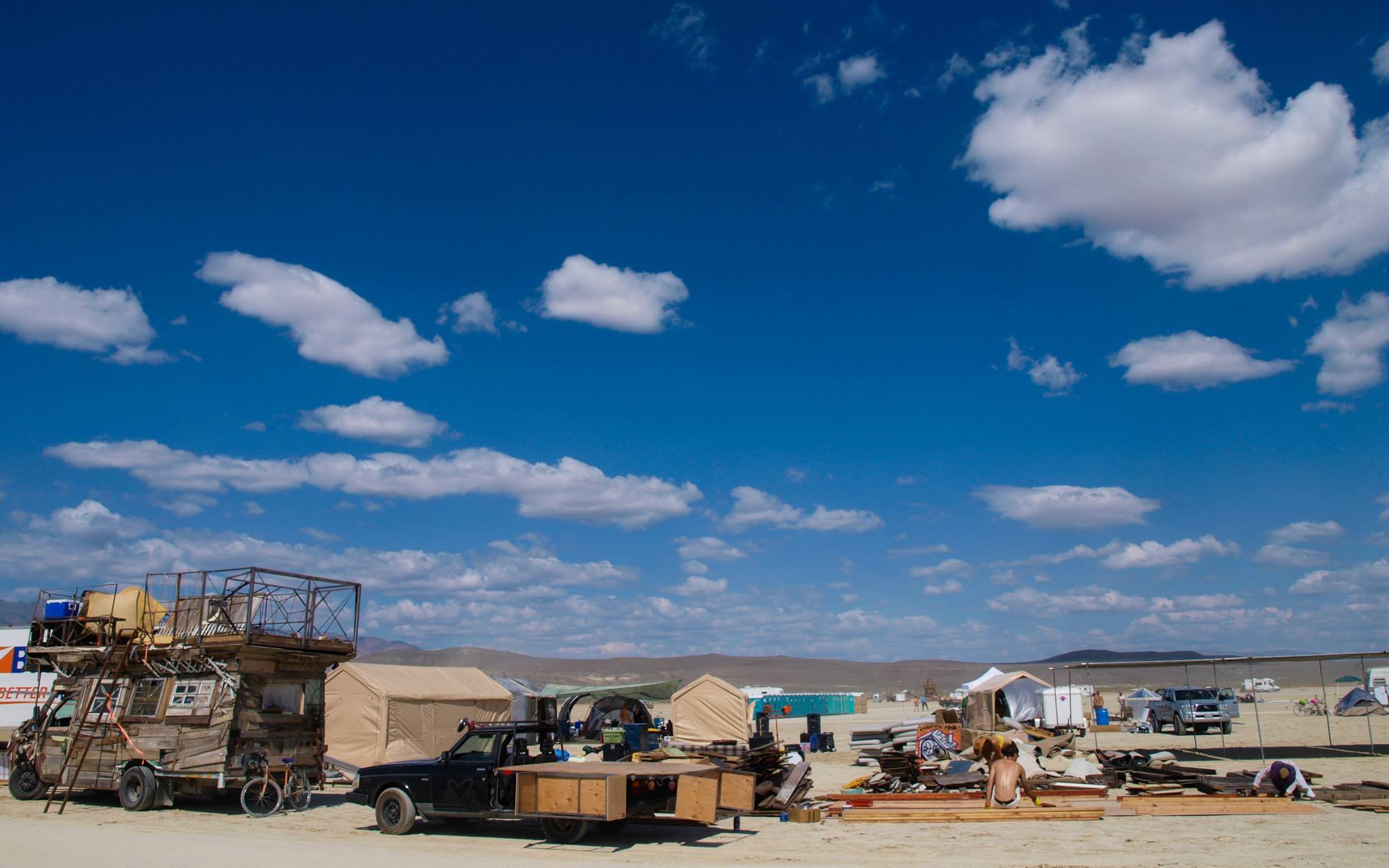
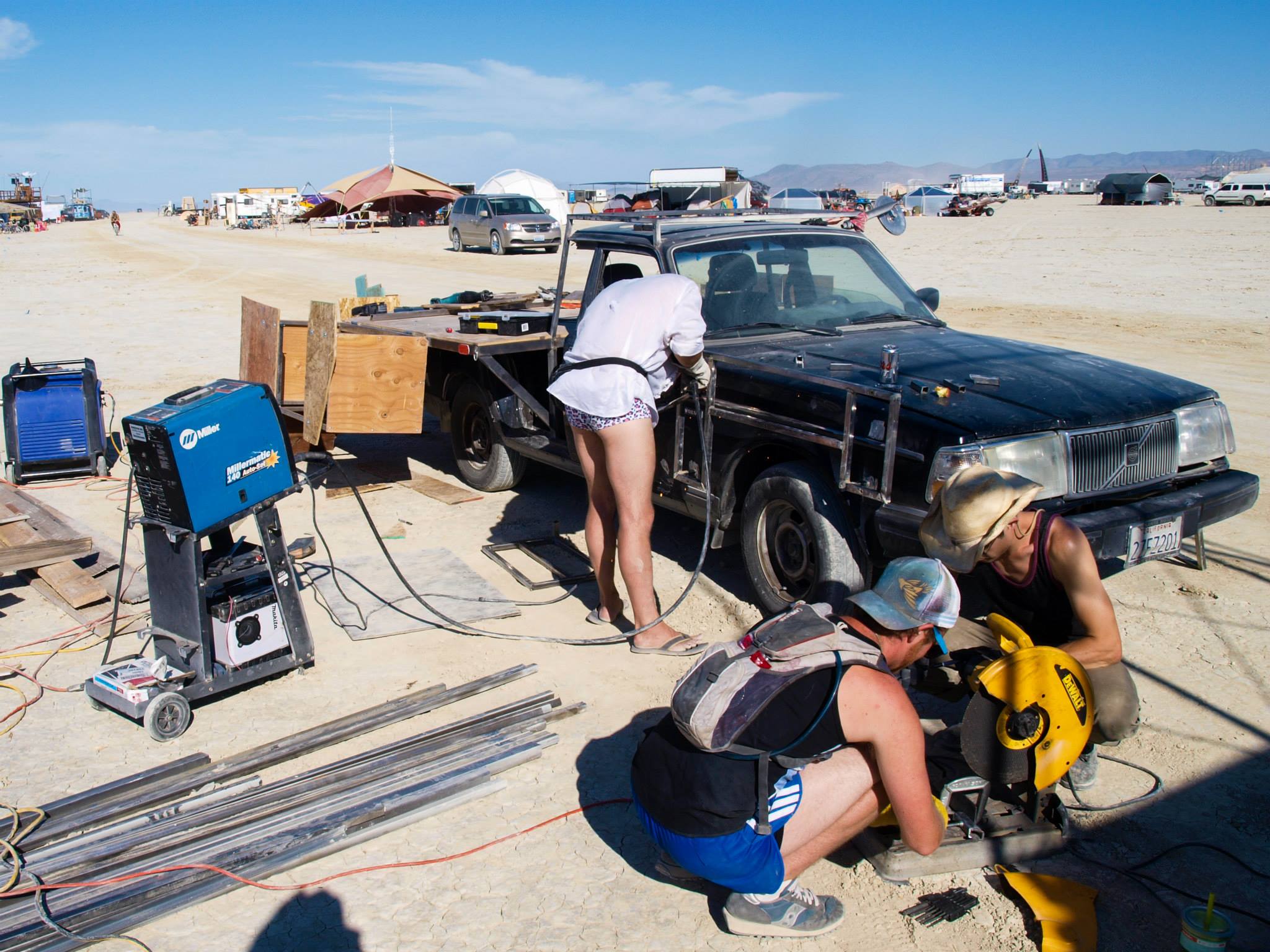
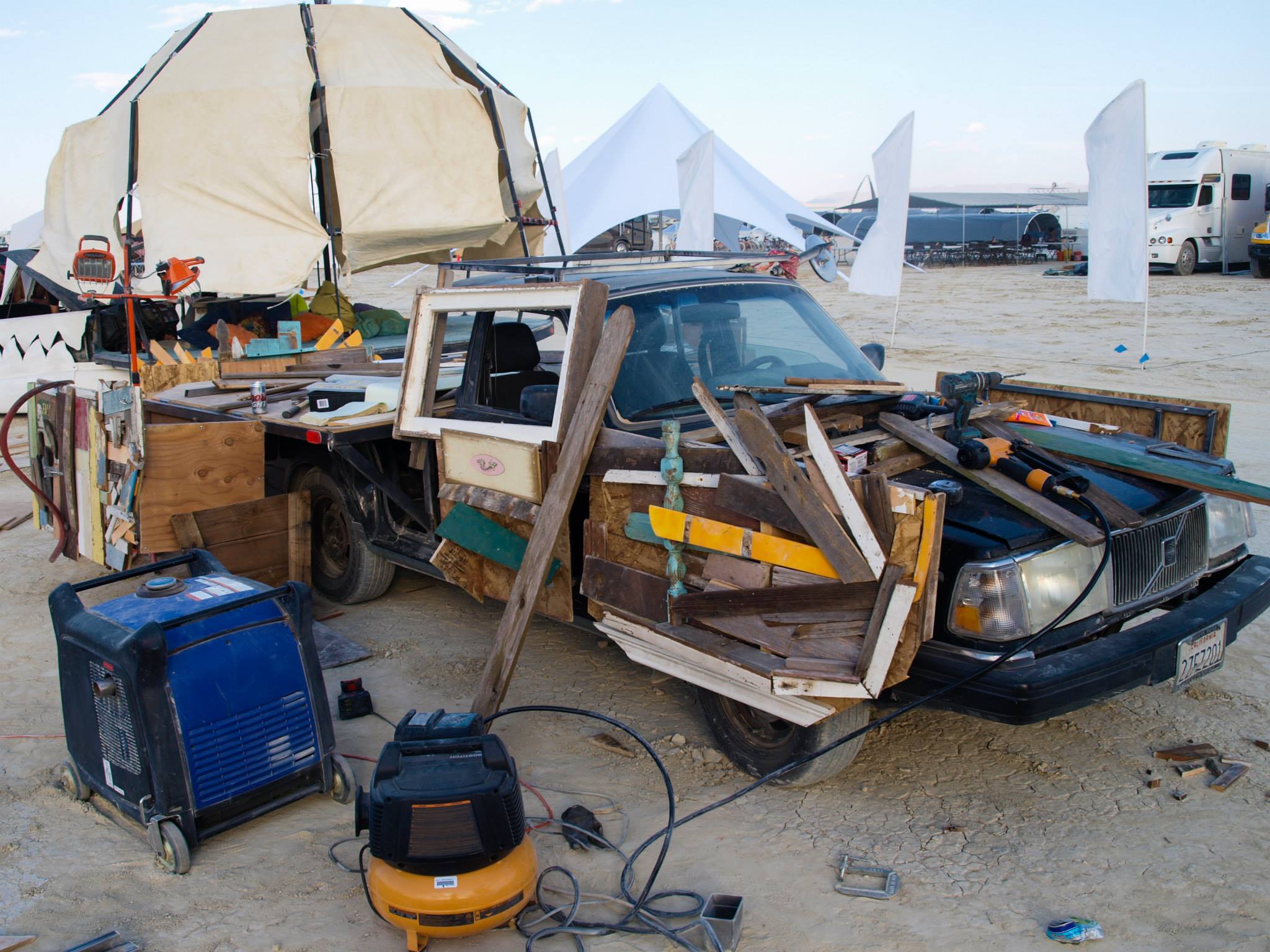
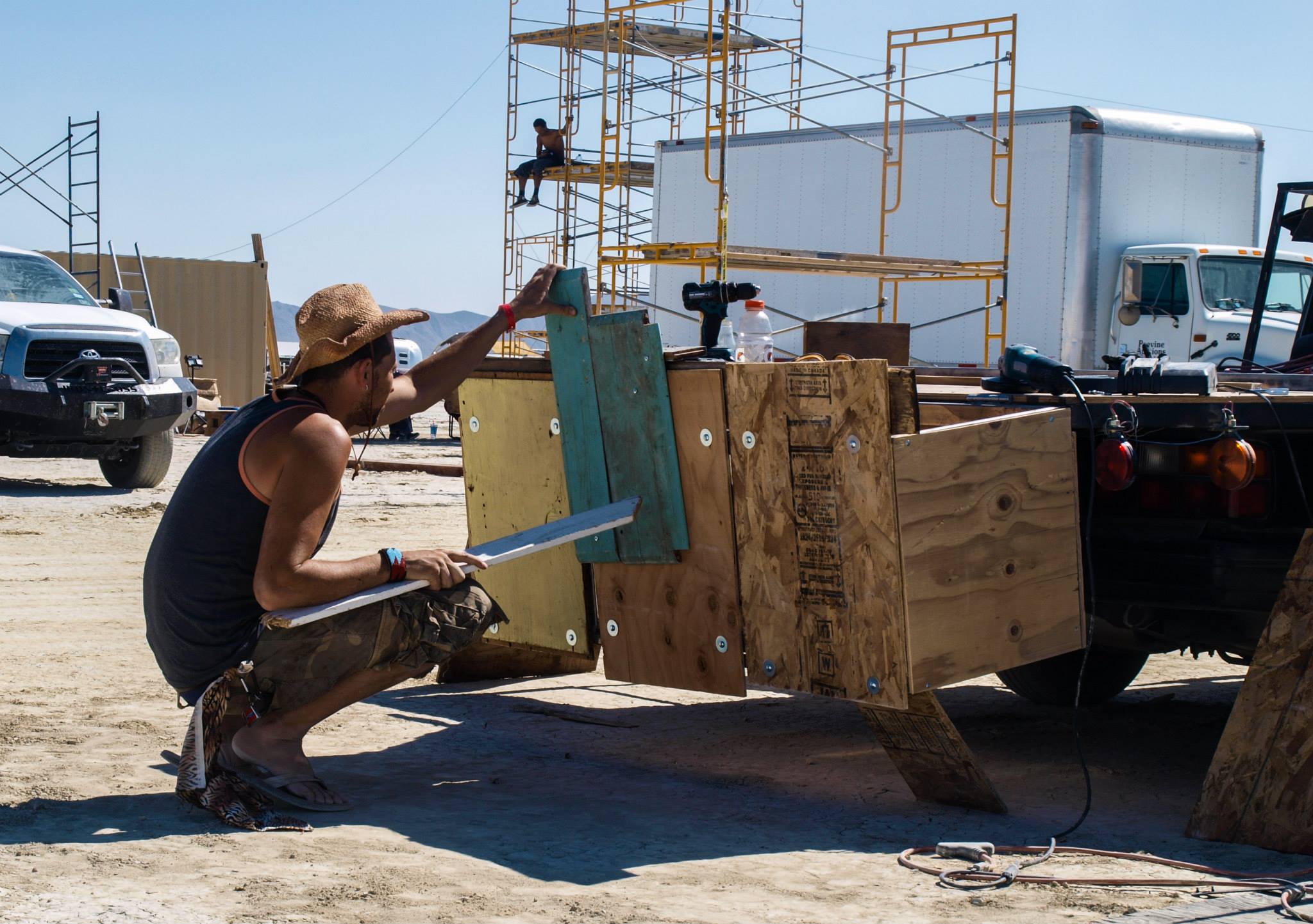
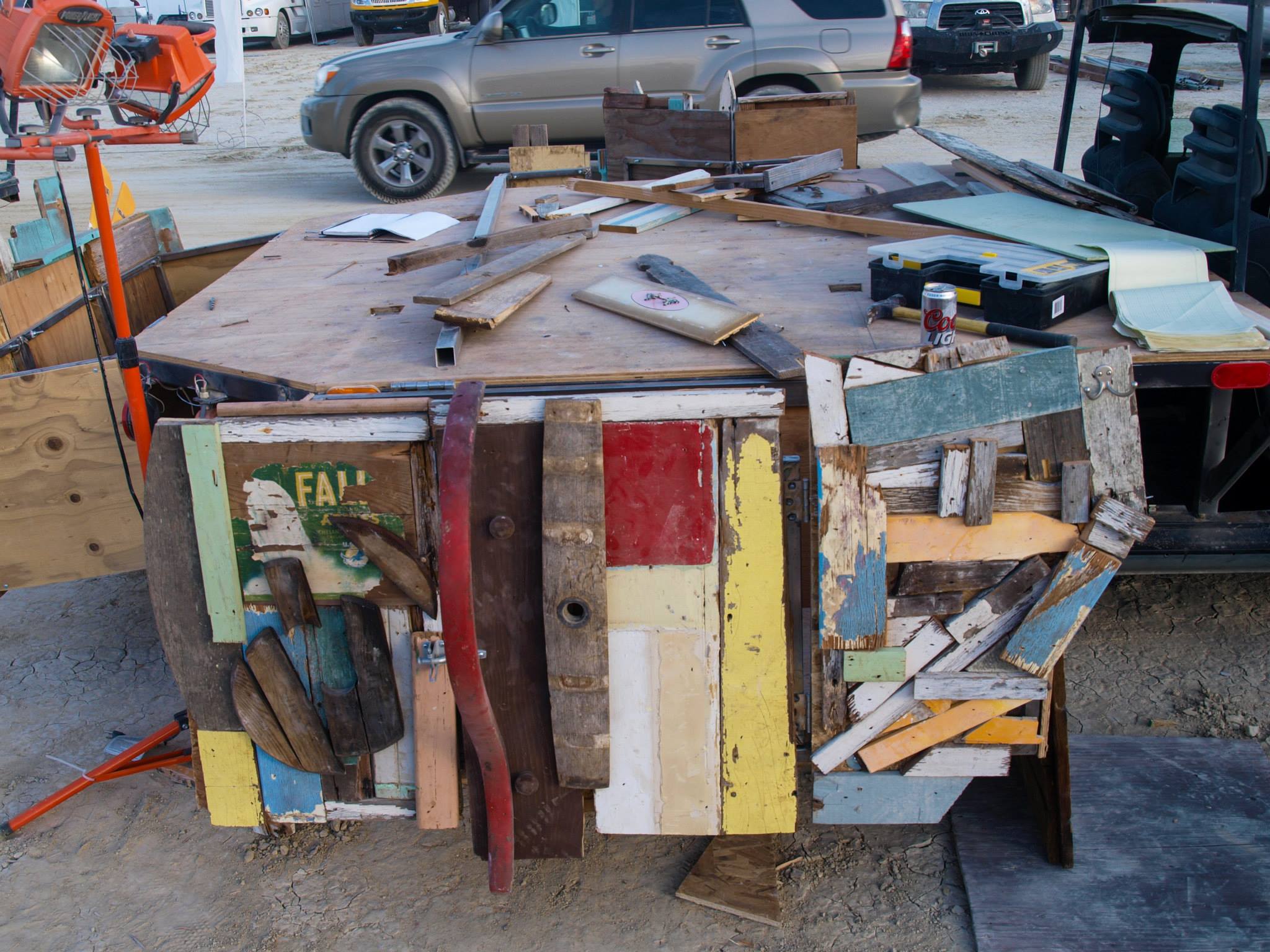
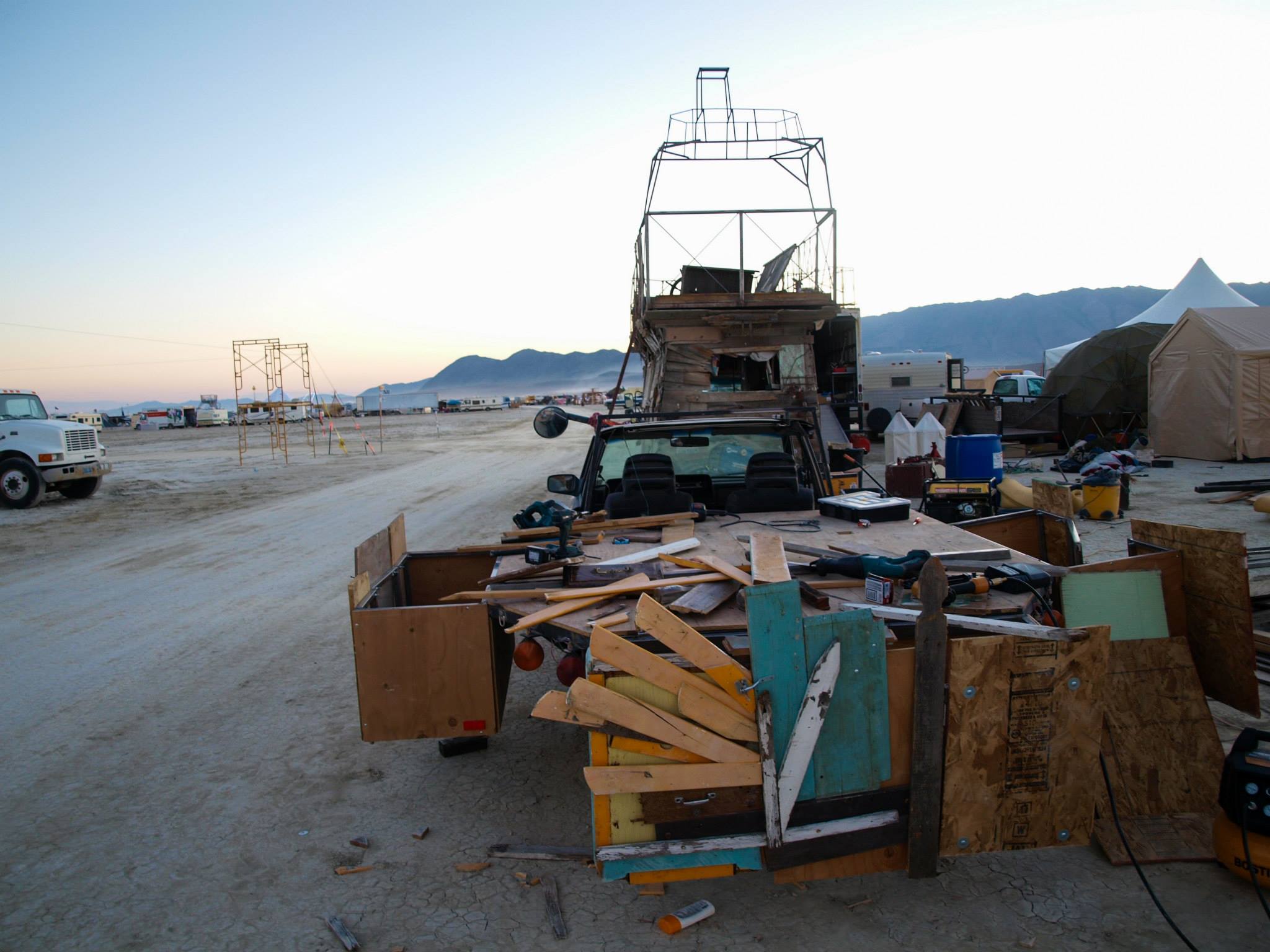
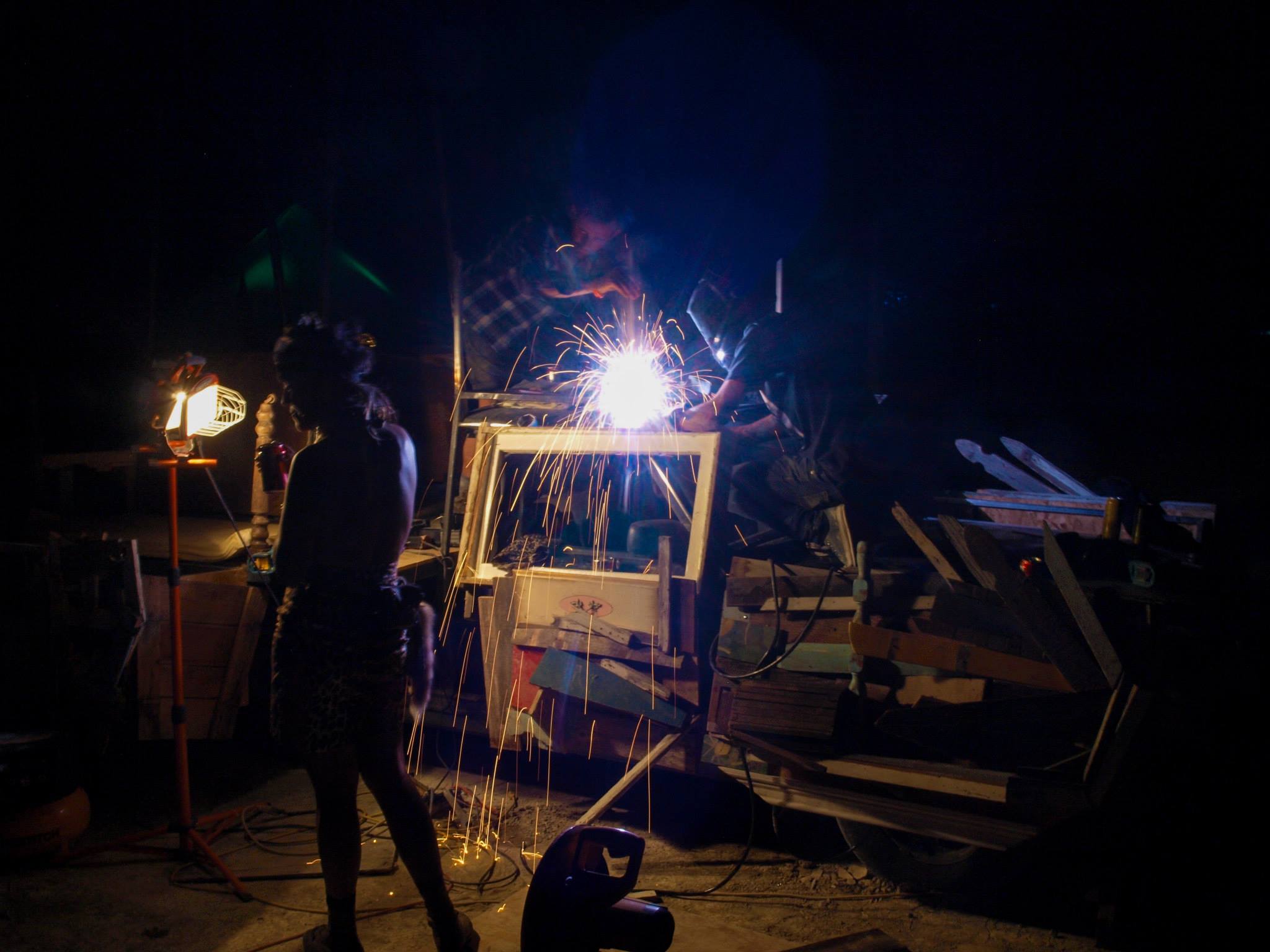
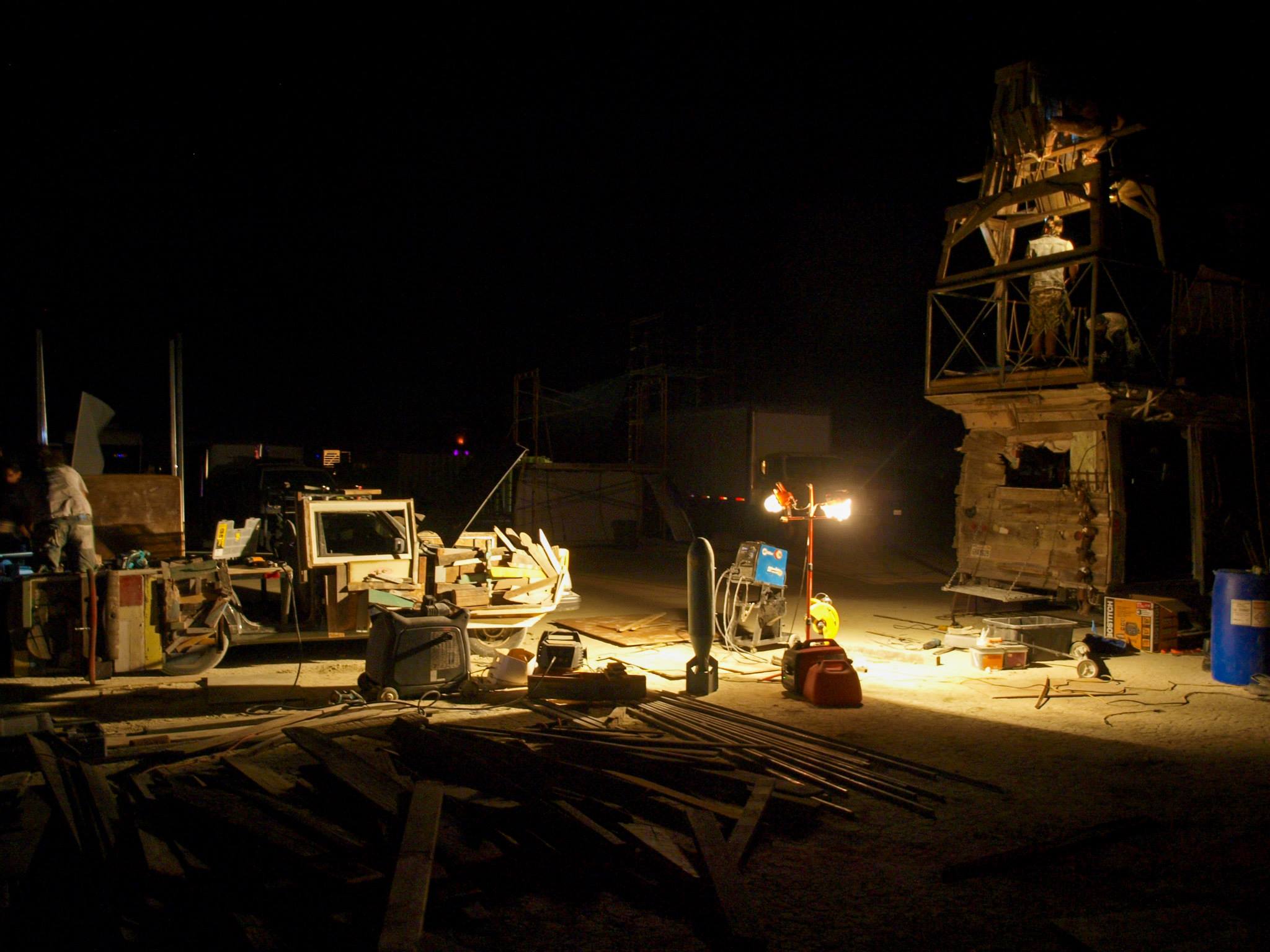
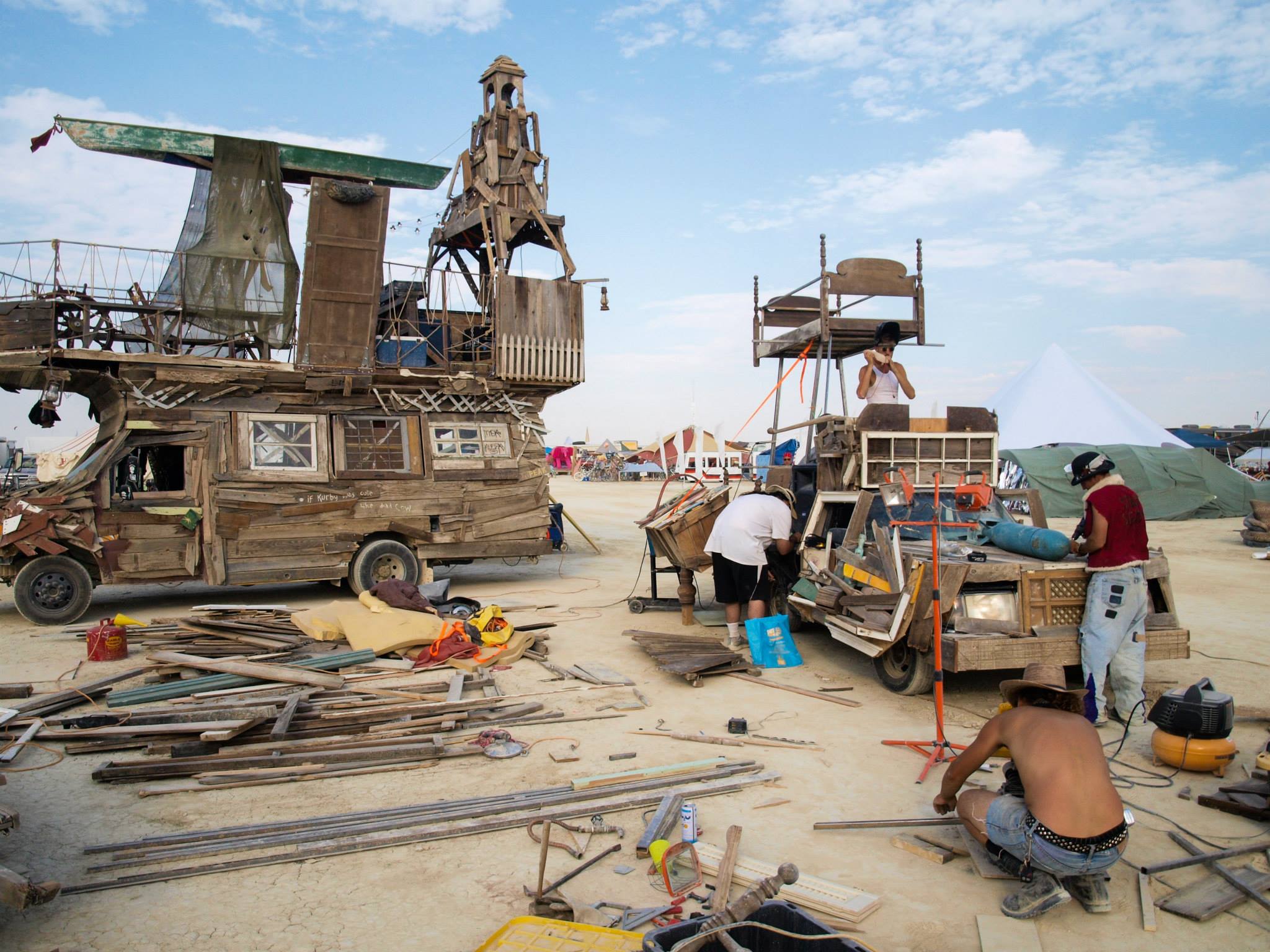
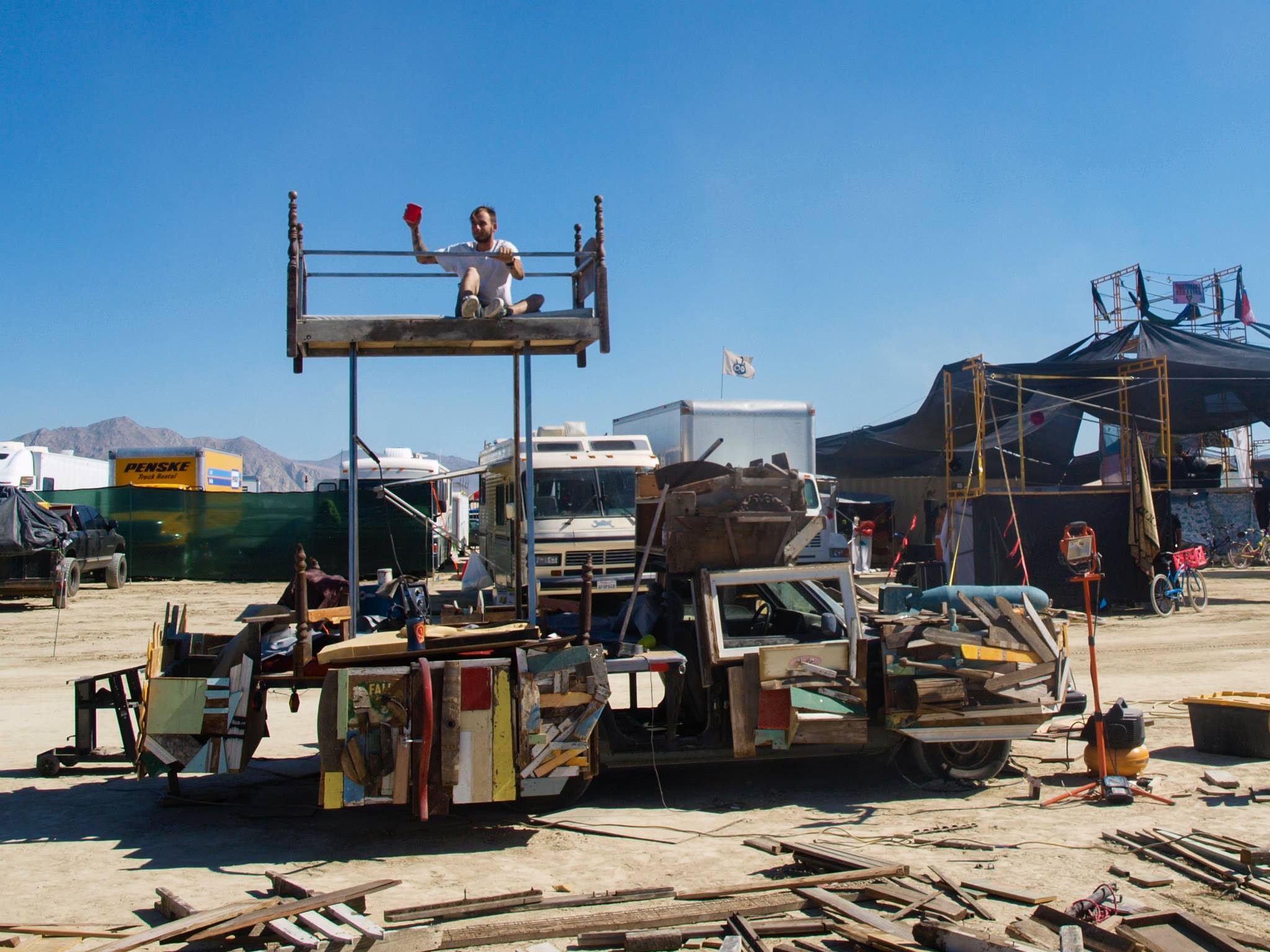
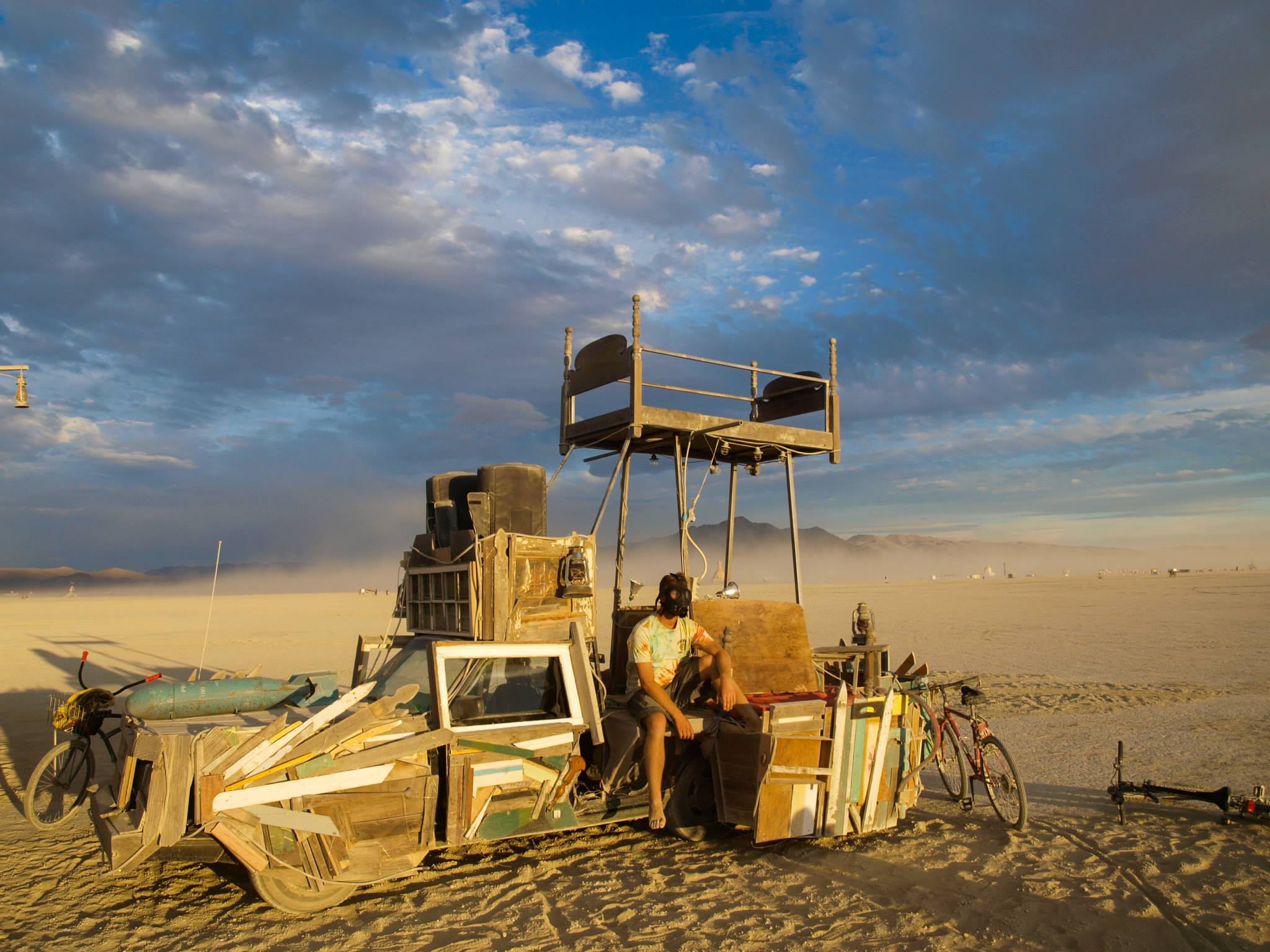

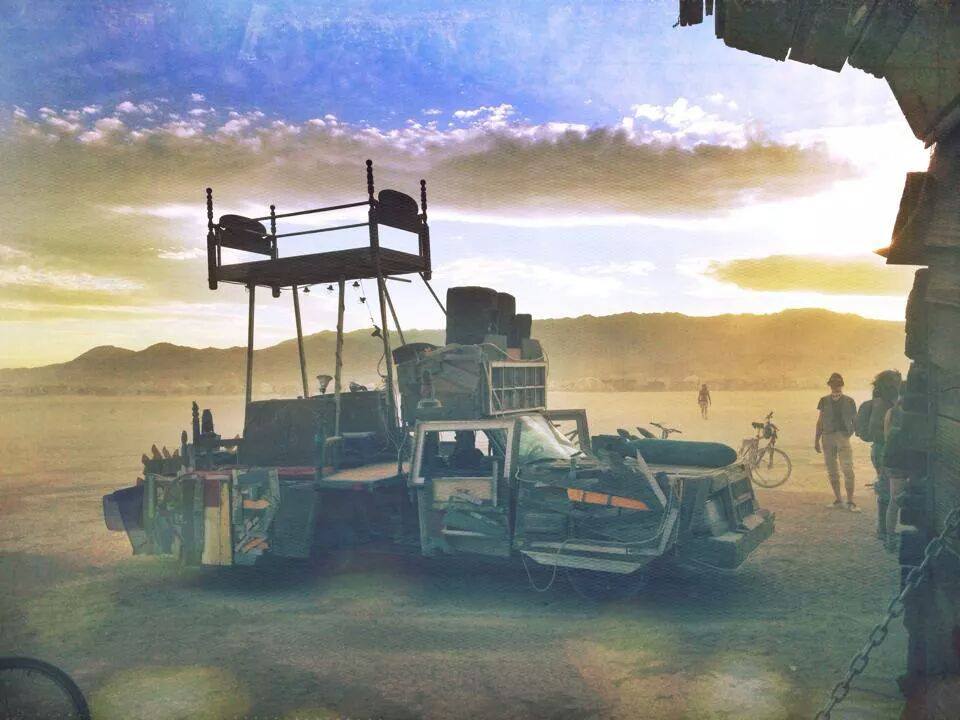
Our previous forays into Art Car building had familiarized us with the fact that maintenance and storage of a mutant vehicle in the 51 weeks during which the man is not burning can be a real headache. Once transmogrified into rare and fantastical creatures, art cars more less need sheltered space to stay off the road and out of the elements.That sheltered space can be costly and hard to find. With this in mind, we set out to build out Paradox as a transformer capable of scaling back to a utility truck during the off-season.
Our first step was to chop the back and make space for a custom-welded hollow-tube frame which would serve as the base platform for both the art car passenger deck and the utility vehicle flat-bed. Many brave saw blades died in the process of ripping through the solid steel frame of the 240, but eventually the rear area was clear and the frame was welded into place. With the frame complete we constructed three matching hollow-tube boxes which were attached to the base frame by hinges and which--when folded into the up position--would serve as cargo boxes for the utility truck side of Paradox. When in the down position, the boxes would come to serve as enclosed foot rests for passengers, insuring that a solid and beautifully decorated barrier would stand between passengers and anyone making the ill-advised decision to try to jump on the car without invitation. The folding action of the boxes had the aspect of a scarab, folding inward to form a useful carapace when needed and expanding outward when desired to show off its wings and take flight.
The flatbed frame and cargo/footrest boxes were then skinned with a layer of plywood, and welding resumed with the creation of a steel framework over the top of the still-intact cab (to later accommodate a DJ booth). During the process of chopping and reconstruction on the exterior, my friend and master Volvo mechanic Mel Kinder went to work preparing our lady Paradox mechanically for the rough journey to Black Rock and back again. In addition to a handful of minor fixes, Mel did major work blocking and reinforcing the rear suspension to allow for much heavier loads of cargo and passengers than the good old Swedes ever intended. Short on time but with the first stage of the build complete and a stockpile of metal and scavenged wood in tow, Paradox took her place in our early crew caravan and headed toward the desert.
For myself and my crew of wonderful friends and collaborators, Burning Man has always been in large part about pushing ourselves past our known boundaries and observing just how much farther our actual capacities extend past what we formerly knew. We have found over the years that we are immensely capable creatures even when sleep-deprived, over-stimulated, heat-stroked, caked in dust, frozen to the toes, and otherwise battered by the elements and general battlefield conditions. We have always asked the same of our vehicles, and like Miracle and PolyGone before her, Paradox performed admirably on her journey to the playa despite being burdened by a few thousand pounds of gear for which she was not originally designed.
Safely arrived on the alkaline floor of our late-summer-home, work continued at a fever pace. Additional frames were built and hard welded to the steel surface of the 240 on each major surface to act as mounting pads for removable plywood panels upon which detail wood work and ornamentation could be placed. The steel box above the cab was expanded to create the basis for a DJ booth and large square tube supports were welded from the chassis extending up to hold an additional steel box suspended high over the rear flat-bed. With the frames all in place and plywood panels attached Paradox took on a whole new geometry, each panel adding a different contour to a new shape and a blank canvas on which to the apply the massive cache of scavenged wood and other charismatic 'waste' material we had hauled along with us.
As the rear hinged boxes were decorated and embellished to form elaborate gated footrest/passenger enclosures, the rear flat-bed was transformed into couch seating, each foot-box corresponding to a comfortable seating area facing outward towards the spectacle of the playa. The upper steel frame suspended above was fitted with a mattress and antique bed posts, a dreamy vantage from which to absorb the dreamscape. After days of work the final wood detail work was extended to the cab doors, front side panels, hood, grill, and upper DJ booth enclosure.
Once fully assembled, wired up, illuminated and ready to ramble, Paradox was able to fit 13 passengers and a driver. She performed nobly through the duration of the event and and the journey home, arriving back in the Bay with a slight limp but otherwise intact. She is a thing of beauty and would not have been possible without the sweat, blood and insight of Dustin Wright, Angelo Pancini, Ben Hencke, Glenn Howe, Blake Todd, Christopher Blaz, Rob White, Kurt Williams, Monica Canilao, Derek Appleblatt, and many others.